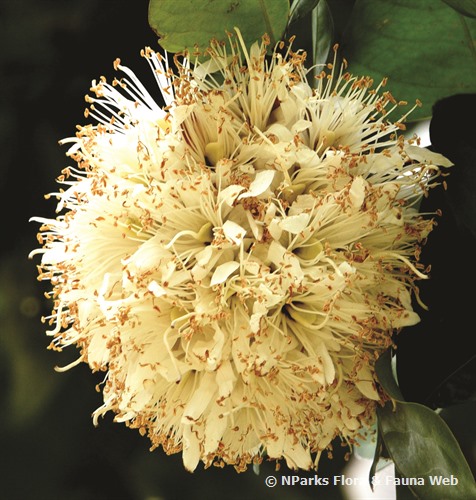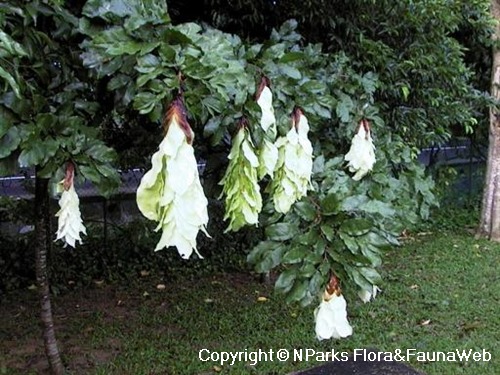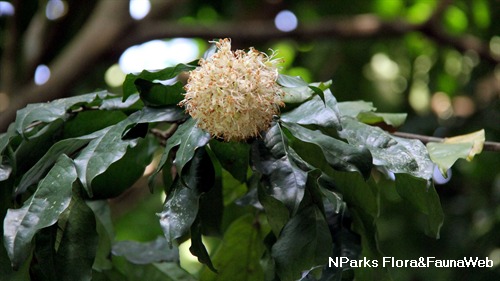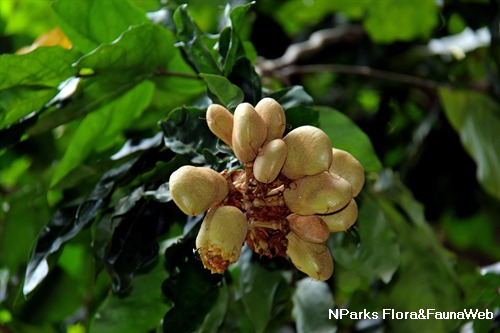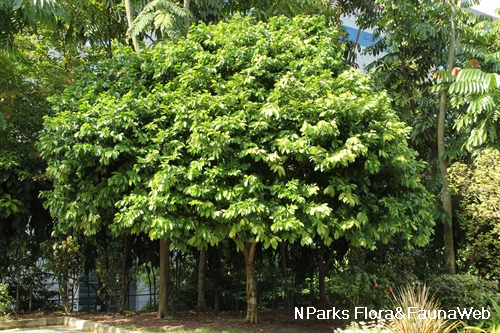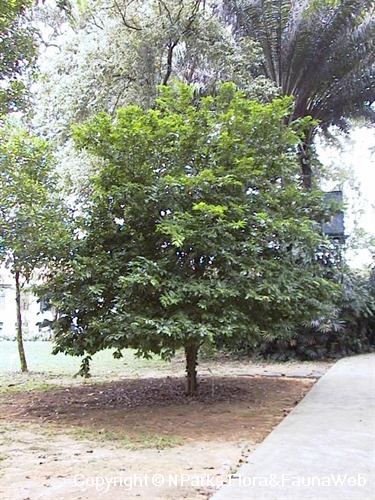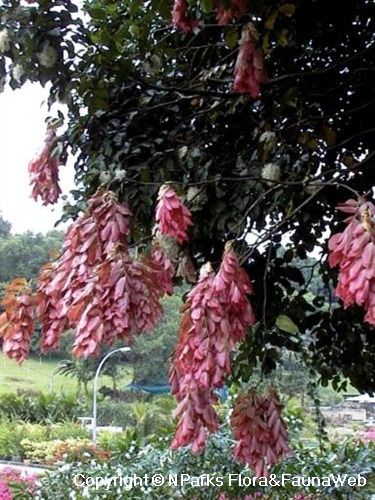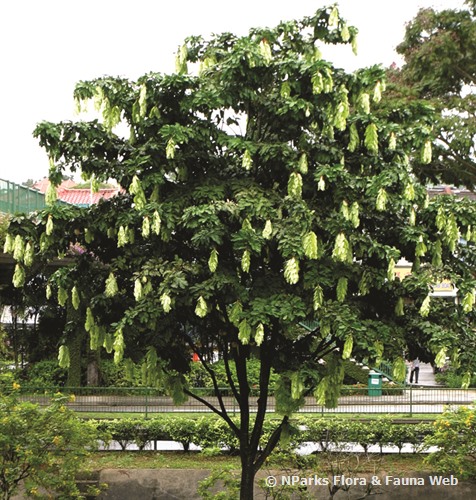
Back
Cynometra browneoides (Harms) Rados.
| Family Name: | Fabaceae (Leguminosae) |
| Synonyms: | Maniltoa browneoides Harms, Pseudocynometra browneoides (Harms) Kuntze, Maniltoa gemmipara Scheff. ex Backer |
| Common Name: | Handkerchief Tree, Pokok sapu tangan |
Name
Classifications and Characteristics
| Plant Division | Angiosperms (Flowering Seed Plants) |
|---|---|
| Plant Growth Form | Tree (Small (6m-15m)) |
| Lifespan (in Singapore) | Perennial |
| Mode of Nutrition | Autotrophic |
| Maximum Height | 12 m |
Biogeography
| Native Distribution | New Guinea |
|---|---|
| Native Habitat | Terrestrial |
| Preferred Climate Zone | Tropical |
| Local Conservation Status | Non-native (Horticultural / Cultivated Only) |
Description and Ethnobotany
| Foliage | Very prominent young flushes which lead this tree to be planted for aesthetic purposes. Young leaves resemble soft white handkerchiefs, hanging vertically downwards from the branches. They take a few days to turn green, harden and become erect. The leaves are pinnately compound, and the mature leaflets have smooth, entire margins. |
|---|---|
| Flowers | The flowers are white with long stamens, borne in large, rounded terminal clusters surrounded by brown, papery bracts. The flowers appear together with the new flushes, and turn rapidly from white to brown once pollinated or damaged. The flowers appear to attract birds such as starlings and sunbirds. |
| Fruit | The fruit is a broad, somewhat flat and slightly beaked, brown pod that contains a single round seed. |
| Others - Plant Morphology | A small to medium sized tree, frequently grown for the prominent young flushes which are white and drooping, giving the appearance of "handkerchiefs", hence the common name. The crown is large, round and fairly dense. Ethnobotanical Use (Other):The timber is quite strong and durable, and is used for making furniture. |
Landscaping Features
| Desirable Plant Features | Ornamental Foliage |
|---|---|
| Landscape Uses | Suitable for Roadsides, Parks & Gardens, Small Gardens |
Fauna, Pollination and Dispersal
| Fauna Pollination Dispersal Associated Fauna | Bird-Attracting |
|---|---|
| Pollination Method(s) | Biotic (Fauna) |
Plant Care and Propagation
| Light Preference | Full Sun, Semi-Shade |
|---|---|
| Water Preference | Moderate Water |
| Plant Growth Rate | Moderate |
| Rootzone Tolerance | Moist Soils, Well-Drained Soils, Easy to Grow |
Foliar
| Foliage Retention | Evergreen |
|---|---|
| Mature Foliage Colour(s) | Green |
| Prominent Young Flush Colour(s) | White |
| Young Flush Texture(s) | Thin |
| Leaf Area Index (LAI) for Green Plot Ratio | 4.0 (Tree - Dense Canopy) |
Floral (Angiosperm)
| Flower Colour(s) | White |
|---|---|
| Flower Texture(s) | Thin |
| Flower Grouping | Cluster / Inflorescence |
Fruit, Seed and Spore
| Mature Fruit Colour(s) | Brown |
|---|
Image Repository
Others
| Master ID | 1722 |
|---|---|
| Species ID | 3015 |
| Flora Disclaimer | The information in this website has been compiled from reliable sources, such as reference works on medicinal plants. It is not a substitute for medical advice or treatment and NParks does not purport to provide any medical advice. Readers should always consult his/her physician before using or consuming a plant for medicinal purposes. |

